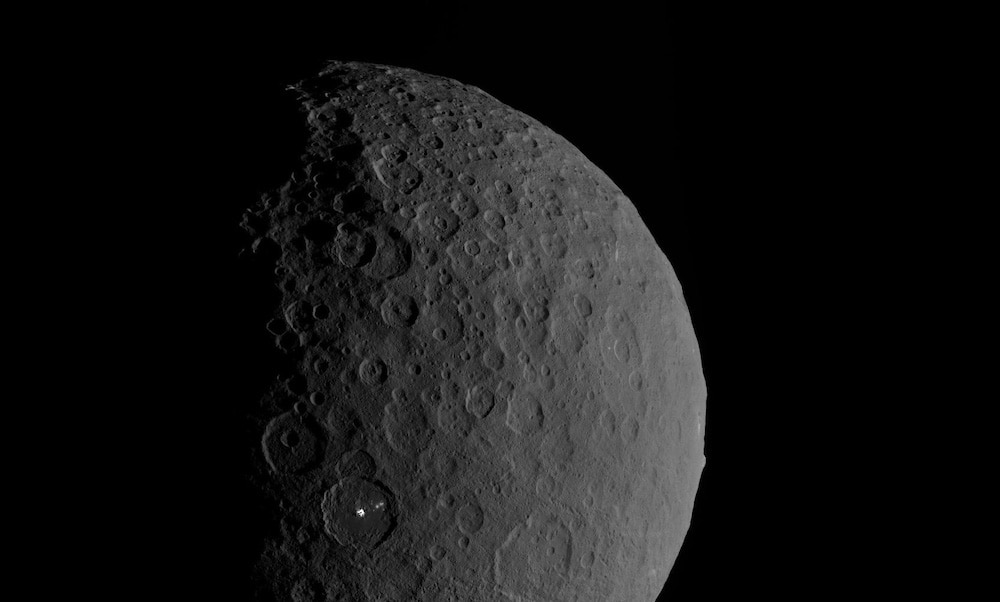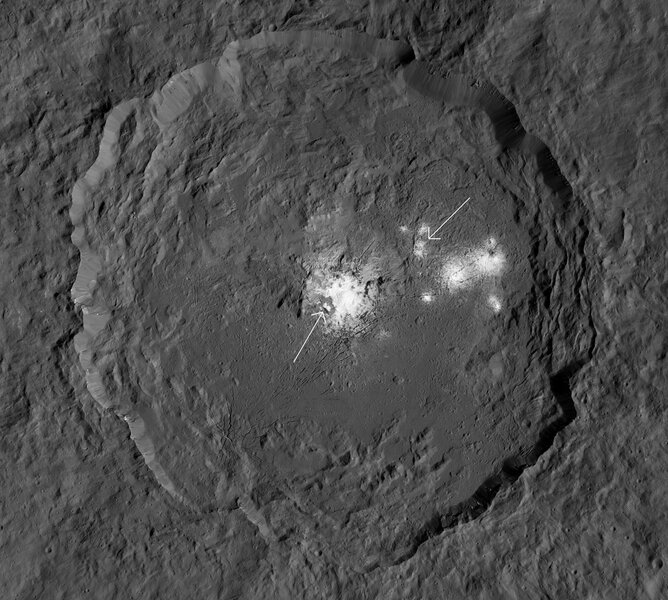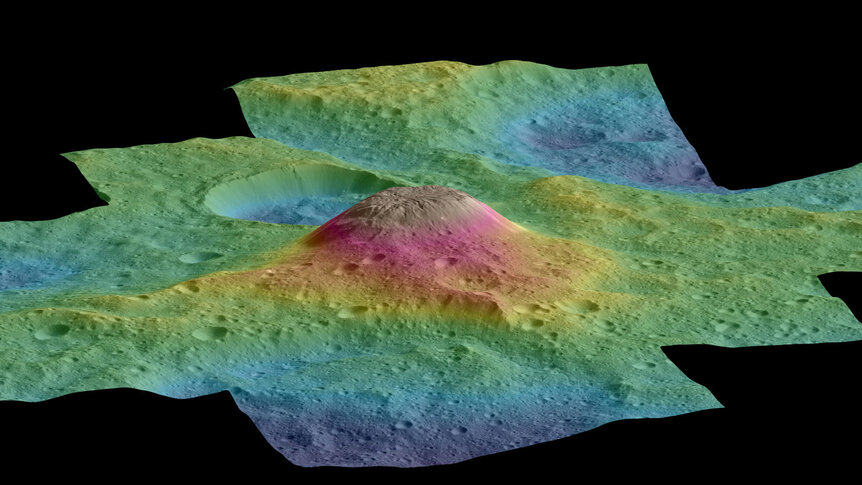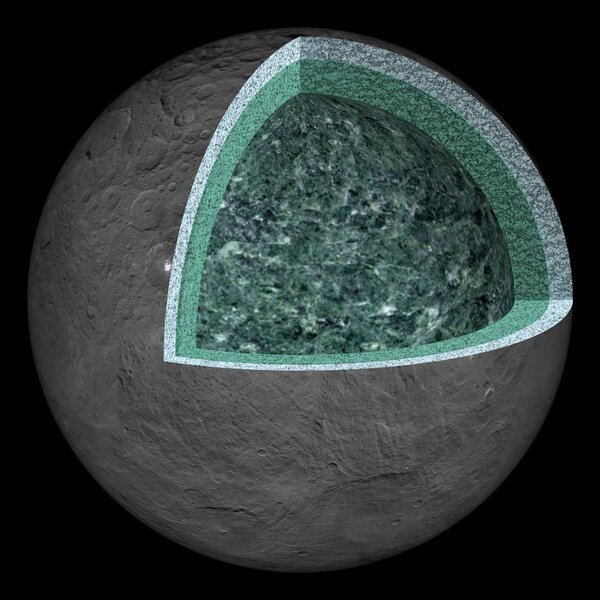Create a free profile to get unlimited access to exclusive videos, sweepstakes, and more!
Radioactivity powers volcanoes of salty ice on Ceres
The cryovolcanoes aren't nuclear, but their heat comes from radioactive decay.

Ceres is the largest object in the asteroid belt, the wide expanse between Mars and Jupiter littered with debris left over from the solar system’s planet-making process. Ceres used to be called an asteroid, but is so large — over 900 kilometers in diameter — that planetary scientists now call it a protoplanet, meaning it was on its way to becoming an actual planet until the raw materials it was growing from ran out.
It’s a weird beast. Its interior composition and structure aren’t well understood, but, shockingly, it may have a very briny and possibly muddy liquid water under its surface! When the Dawn spacecraft entered orbit of Ceres in 2015 it immediately saw bright splotches of material in a few craters that turned out to be salt deposits, left over from eruptions of water onto the surface. Also, it spotted one of the weirdest structures in the solar system: Ahuna Mons, a huge Devils Towers-like mesa 17 km wide and looming 4 km above the surface. It’s likely the remains of a muddy, briny volcano of ice — a cryovolcano.
Before these were discovered, it was expected that Ceres was a solid ball of rock and ice, cooled through and through due to its relatively small size and distance from the Sun. But these structures strongly imply something is keeping or kept the interior of the protoplanet warm. What could that be?
A new study shows the source of that internal heat in Ceres is radioactive decay [link to paper]. I’m not gonna lie to you: That really surprised me.
Planets like Earth are big, and have lots of internal heat. Some of that is due to the heat of formation — imagine getting hit by asteroids a dozen kilometers across, the size of the dinosaur-killer, every day for a million years, and you can understand why they got hot — some due to radioactivity, and a fraction due to other sources. Because Earth is big it has a lot of radioactive materials, and it also takes a long time for that heat to leak out.
Ceres isn’t big. It likely didn’t get too hot after it formed, and cooled from there. This idea sparked a couple of different models for its interior. One states that this initial mild heat very slowly diffused out, and that the interior never underwent convection — where hotter material rises and cooler stuff sinks. The other model, called the frozen mudball model, has radioactive decay from elements like uranium, thorium, and potassium in the center gently heating the interior, causing some weak convection. It also would have some differentiation as well, where heavy materials sink to the center and lighter material floats to the top.
The new work tests this second model. They used computer simulations that solve the complex equations for material movement given heating in the center, both rapid heating due to short-lived radioactive elements and slower heating from ones with longer decay times.
What they found is… complicated, but interesting. One of the first kinds of convection that starts in the protoplanet’s interior is called “degree-one convection,” and is on a huge scale, covering an entire hemisphere of Ceres. In this case, one hemisphere rises up a little while the other one sinks down a tad. This has been suggested to explain some features on the Moon and Mars, for example.
On Ceres, they find that this could explain some odd features seen by Dawn, including the thick crust under Hanami Planum, a 550-km wide plain on Ceres that includes Occator Crater, renowned for it’s bright salt deposits. Samhain Catenae is a series of fractures in the crust near Hanami Planum, which are extensional features hundreds of kilometers long, cracks generated as the crust expanded. Both of these suggest pressure and upwelling from below.
This convection would have lasted something like a billion years, started a few hundred million years after Ceres formed. This event would have restructured the surface of Ceres, which could also explain why there are no very large craters on the surface; they would have formed early on but all the movement of the crust due to internal convection would have erased them.
This model is pretty cool and does explain a lot of features we see now on the surface. However, it models the interior of Ceres from billions of years ago, and is somewhat agnostic about what things look like below the surface now. There may be pockets of muddy brine that survive to this day, which would explain Ahuna Mons — the frozen material making up the huge mesa should slump and flow away over the course of a few tens or a hundred million years, indicating it’s either still being slowly fed from below or that it’s young.
So there’s clearly a lot more to know about this weird world. How did it form? Did it form where it is now, or did it come from farther out in the solar system? What happened after it formed, and what does it look like now deep inside? Dawn helped answer some of these questions, but like all good science experiments it raised a lot more. This new work is a big step in understanding Ceres, but there’s a long, long way to go.





























